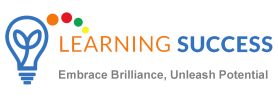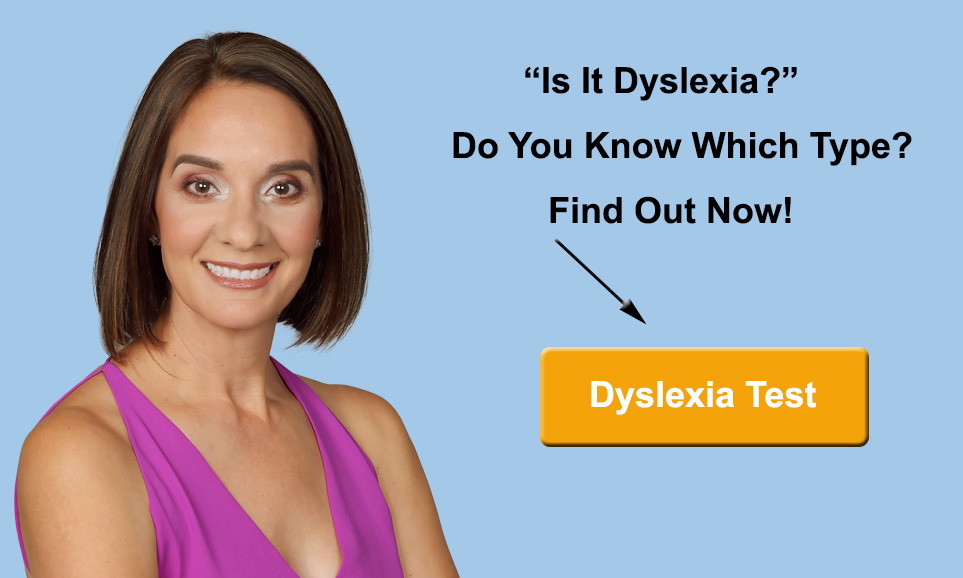College Accommodations for Students with Learning Disabilities
Key Points
- Learning disabilities affect many students: Research suggests around 5-10% of college students may have learning disabilities, though exact figures vary.
- Common disabilities include: Dyslexia, Dyscalculia, Dyspraxia, Visual and Auditory Processing Deficits, and ADHD, each impacting specific academic skills.
- Accommodations seem essential: They likely ensure equal access to education, helping students overcome barriers to success.
- Support varies by institution: Colleges offer tailored instruction, alternative assessments, technology, and more, but students must actively seek them.
- Self-advocacy is key: Evidence leans toward students needing to self-identify and provide documentation to access accommodations.
What Are Learning Disabilities?
Learning disabilities are brain-based conditions that affect how individuals process information, impacting skills like reading, writing, math, or organization. In college, these challenges can make coursework, exams, and time management difficult without proper support.
Why Accommodations Matter
Accommodations help students with learning disabilities succeed by addressing their specific needs, such as extra time for tests or assistive technology. Without these, students may struggle to demonstrate their true abilities, potentially affecting their grades and confidence.
How Colleges Support Students
Colleges provide accommodations like modified instruction, alternative test formats, adaptive software, classroom adjustments, extra time, and disability resource centers. Students must contact their school’s disability services office, provide documentation, and request support to access these resources.
Comprehensive Guide to Supporting College Students with Learning Disabilities
Learning disabilities (LD) are neurologically-based conditions that affect how individuals process and utilize information, impacting academic skills such as reading, writing, mathematics, and organization. In higher education, students with LD face unique challenges that can hinder their academic performance without appropriate support. Research suggests that approximately 5-10% of college students self-report having learning disabilities, with around 5.96% identified in a 2014 survey (PMC Study). These students require tailored accommodations to ensure equal access to education, as mandated by laws like the Americans with Disabilities Act (ADA) and Section 504 of the Rehabilitation Act.
This guide, inspired by an infographic from PREPEXPERT, explores six common learning disabilities—Dyslexia, Dyscalculia, Dyspraxia, Visual Processing Deficit, Auditory Processing Deficit, and Attention-Deficit/Hyperactivity Disorder (ADHD)—and the accommodations colleges provide to support affected students. Drawing on research from sources like the National Center for Education Statistics (NCES), BestColleges, and Understood.org, this article provides a detailed examination of these disabilities, the accommodations available, and the process for accessing them, empowering students, parents, and educators to foster academic success.
Common Learning Disabilities in College
Learning disabilities vary in their impact, affecting specific cognitive and academic skills. Below is a detailed overview of the disabilities highlighted in the infographic, based on authoritative sources.
Dyslexia
Dyslexia is a reading-based learning disability characterized by difficulties with accurate and fluent word recognition, spelling, and decoding. Students with dyslexia may struggle with reading comprehension, written expression, and recalling rote information like phone numbers or addresses (BestColleges Guide). These challenges can make college-level reading assignments and essay writing particularly demanding.
Dyscalculia
Dyscalculia affects mathematical abilities, causing difficulties with number sense, calculations, and problem-solving. Students may struggle to count backward or forward, sequence numbers, connect numbers to quantities, or read analog clocks. In college, dyscalculia can hinder performance in math-heavy courses or subjects requiring data analysis.
Dyspraxia (Developmental Coordination Disorder)
Dyspraxia, also known as Developmental Coordination Disorder (DCD), is a neurodevelopmental condition affecting fine and gross motor coordination. It impacts tasks like writing, typing, balancing, or playing sports, with prevalence estimated at 1.8-6% (Medical News Today). In academic settings, dyspraxia may cause difficulties with handwritten assignments or lab work requiring precise movements. The infographic’s focus on “writing-related difficulties” likely refers to fine motor challenges, though dyspraxia’s scope is broader.
Visual Processing Deficit
Visual Processing Deficit, or Visual Processing Disorder, involves difficulties interpreting visual information. Students may struggle to distinguish similar letters (e.g., b vs. d), understand spatial relationships, or interpret graphs and maps. This can affect reading, writing, and tasks requiring visual analysis, such as in science or art courses.
Auditory Processing Deficit
Auditory Processing Deficit, or Auditory Processing Disorder (APD), impairs the ability to process and interpret sounds, particularly speech. Students may have trouble following verbal instructions, distinguishing similar sounds, or comprehending lectures, impacting note-taking and class participation.
Attention-Deficit/Hyperactivity Disorder (ADHD)
ADHD is characterized by inattention, hyperactivity, and impulsivity, affecting focus, organization, and time management. Unlike other LDs, ADHD involves an abundance of attention that is difficult to regulate, often exacerbated by sensory sensitivities or social environments. In college, ADHD can lead to missed deadlines, disorganized work, or difficulty sustaining attention during long lectures.
Prevalence and Impact
Estimates of learning disabilities among college students vary due to self-reporting and diagnostic challenges. A 2014 survey found that 5.96% of students self-reported LD, while broader NCES data from 2019–20 indicates 21% of undergraduates reported some form of disability, including physical, mental, or cognitive conditions (NCES Fast Facts). Specific learning disabilities, such as Dyslexia or Dyscalculia, are the most common category under the Individuals with Disabilities Education Act (IDEA), accounting for 32% of students receiving special education services (NCES COE).
These disabilities can significantly impact academic performance, social integration, and self-esteem. For example, students with Dyslexia may struggle with dense textbooks, while those with ADHD may miss deadlines due to executive functioning challenges. Without accommodations, these barriers can lead to lower grades, increased stress, or even dropout, with only 16% of students with disabilities earning bachelor’s degrees compared to 27% of non-disabled peers (DO-IT Statistics).
College Accommodations for Learning Disabilities
Colleges are legally required to provide reasonable accommodations under the ADA and Section 504 to ensure equal access to education. The infographic outlines six key accommodations, detailed below with examples and research-backed insights.
1. Modified Individual Course Instruction
This accommodation customizes how course content is delivered to align with a student’s learning needs. Examples include:
- Providing lecture notes or outlines in advance for students with Auditory Processing Deficit.
- Using visual aids or multimedia for Dyslexia or Visual Processing Deficit.
- Offering one-on-one tutoring to clarify complex concepts for Dyscalculia.
Such modifications help students process information more effectively, reducing cognitive overload
2. Alternative Coursework and Test Materials
Alternative formats allow students to demonstrate knowledge without being hindered by their disability. Examples include:
- Oral exams instead of written tests for Dyspraxia or Dyslexia.
- Projects or presentations in place of traditional exams for ADHD.
- Modified assignments, such as simplified math problems for Dyscalculia.
These accommodations are less commonly granted and may require negotiation with faculty, as colleges are not obligated to fundamentally alter course requirements
3. Adaptive Software and Technology
Assistive technology bridges gaps in processing and skill execution. Common tools include:
- Text-to-speech software (e.g., Kurzweil) for Dyslexia.
- Speech recognition software (e.g., Dragon NaturallySpeaking) for Dyspraxia or Dysgraphia.
- Calculators or math software for Dyscalculia.
- Time-blocking apps for ADHD to improve executive functioning.
Colleges often provide access to these tools through disability resource centers or campus libraries (BestColleges Guide).
4. Classroom Accommodations
Classroom adjustments create a more accessible learning environment. Examples include:
- Preferential seating (e.g., front row) for ADHD or Visual Processing Deficit.
- Permission to record lectures for Auditory Processing Deficit.
- Note-takers or instructor-provided notes for Dyslexia or Dyspraxia.
- Quiet testing spaces to minimize distractions.
These accommodations ensure students can fully engage in class without sensory or cognitive barriers (NeuroHealth AH).
5. Additional Time for Coursework and Assignments
Extra time is one of the most common accommodations, addressing slower processing speeds or executive functioning challenges. It applies to:
- Exams and quizzes, often extended by 50-100%.
- Homework assignments or project deadlines.
- In-class activities requiring quick responses.
This accommodation is particularly beneficial for students with Dyslexia, Dyscalculia, or ADHD, allowing them to work at their own pace (LDA America).
6. Disability Resource Centers
Disability Resource Centers (DRCs) are campus offices that coordinate accommodations, provide advocacy, and connect students with resources. Services include:
- Assisting with accommodation requests and documentation.
- Offering workshops on study skills or time management.
- Providing access to adaptive technology or peer support groups.
- Liaising with faculty to ensure accommodations are implemented.
DRCs vary by institution, with some offering robust support and others providing minimal services, so students should research options when choosing a college (Intelligent Guide).
Accessing Accommodations: Process and Challenges
Unlike high school, where Individualized Education Plans (IEPs) are mandated under IDEA, colleges operate under the ADA and Section 504, requiring students to self-advocate. The process involves:
- Self-Identification: Students must contact the DRC and disclose their disability.
- Documentation: Provide recent documentation from a qualified professional (e.g., psychologist, educational specialist) detailing the diagnosis and recommended accommodations.
- Accommodation Request: Meet with DRC staff to determine appropriate accommodations based on documentation and course requirements.
- Faculty Notification: Receive a letter outlining approved accommodations to share with instructors.
Challenges include:
- Documentation Barriers: Obtaining recent, comprehensive documentation can be costly or time-consuming.
- Self-Advocacy: Students unfamiliar with self-advocacy may hesitate to disclose their disability due to stigma or lack of awareness.
- Institutional Variability: DRC support varies, with some colleges offering extensive services and others providing minimal accommodations (Intelligent Guide).
Effectiveness of Accommodations
Accommodations significantly improve academic outcomes for students with LD. A 2014 study found that students with LD who received accommodations reported higher satisfaction with their university experience (PMC Study). Extra time on exams, for instance, allows students to process questions thoroughly, while adaptive technology reduces barriers to accessing course materials. However, only about one-third of students with disabilities inform their college, meaning many miss out on support (NCES Press Release). Encouraging self-disclosure and awareness of DRC services is critical to maximizing these benefits.
Table: Learning Disabilities and Corresponding Accommodations
| Learning Disability | Key Challenges | Recommended Accommodations |
|---|---|---|
| Dyslexia | Reading, spelling, writing | Text-to-speech software, extra time, oral exams |
| Dyscalculia | Math concepts, calculations | Calculators, modified math assignments, tutoring |
| Dyspraxia | Motor coordination, writing | Speech recognition software, alternative formats, note-takers |
| Visual Processing Deficit | Interpreting visual information | Visual aids, enlarged text, quiet testing spaces |
| Auditory Processing Deficit | Processing speech, following instructions | Lecture recordings, written instructions, preferential seating |
| ADHD | Focus, organization, time management | Time-blocking apps, extended time, reduced course load |
Learning disabilities present significant challenges in higher education, but with appropriate accommodations, students can achieve academic success and reach their full potential. By understanding the nature of disabilities like Dyslexia, Dyscalculia, Dyspraxia, Visual and Auditory Processing Deficits, and ADHD, colleges can provide targeted support through modified instruction, alternative assessments, adaptive technology, classroom adjustments, extra time, and robust disability resource centers. Students must take an active role in accessing these accommodations by self-identifying and providing documentation, a process that fosters self-advocacy and independence. As institutions continue to enhance their support systems, the goal remains clear: ensuring every student has an equal opportunity to thrive in college.
Key Citations
- The University Experiences of Students with Learning Disabilities
- Resource Guide for Students with Learning Disabilities
- Types of College Accommodations and Services
- Academic Accommodations for Students with Learning Disabilities
- Rights and Responsibilities of College Students with Learning Disabilities
- Students with Disabilities in Higher Education: Facts and Statistics
- Fast Facts: Students with Disabilities
- COE – Students With Disabilities
- Press Release – A Majority of College Students with Disabilities Do Not Inform School
- College Planning Guide for Students With Learning Disabilities
- Dyspraxia: Causes, Symptoms, and Treatments
- Statistics


